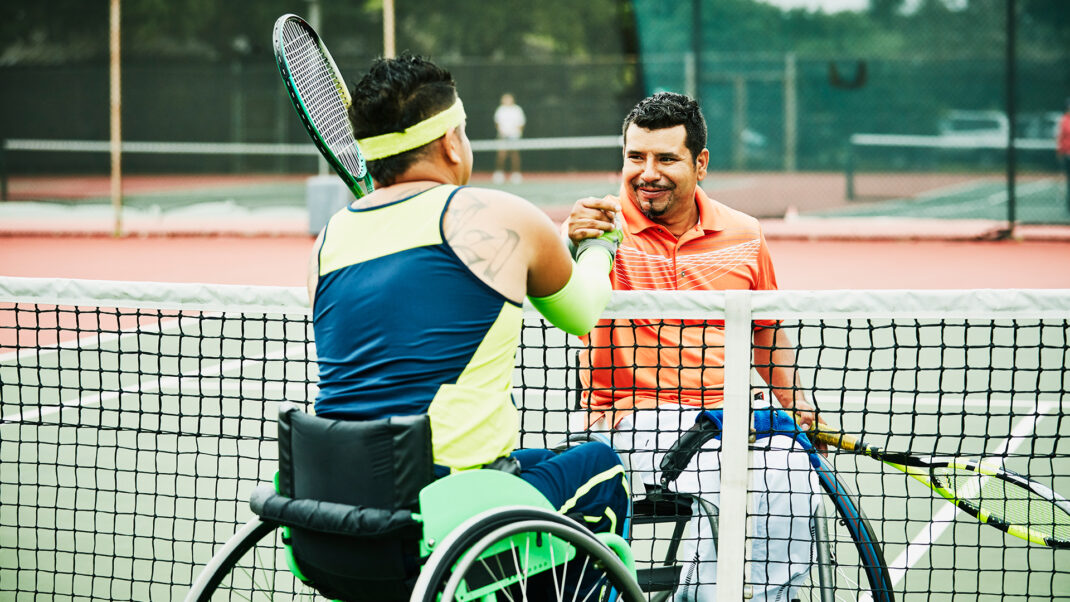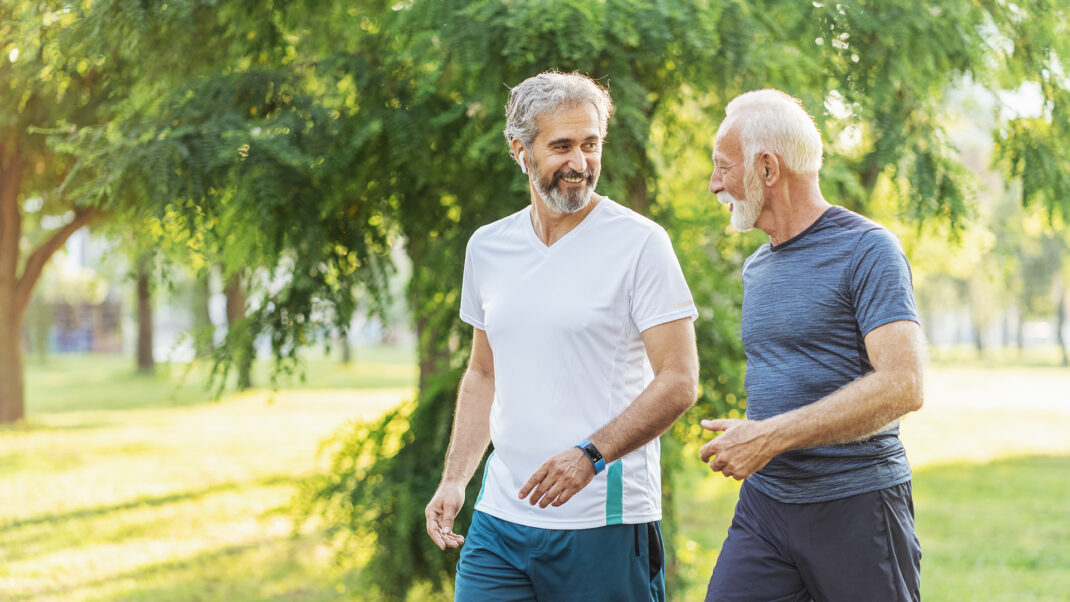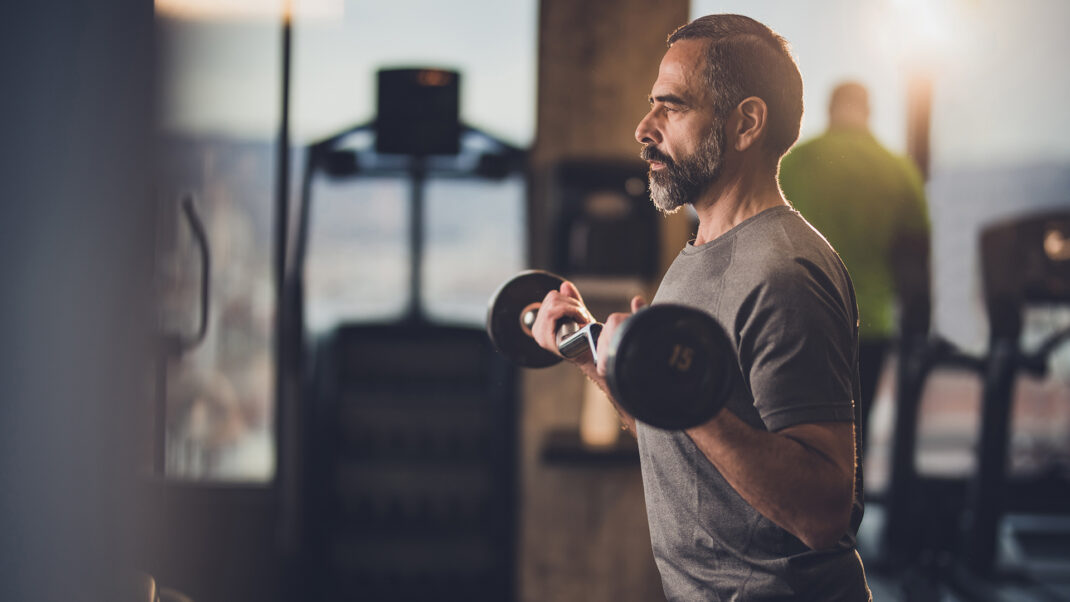Fairway Safety and Performance
Design a golf conditioning program that will prepare the golfer's body for the stresses of the sport.
The popularity of golf has soared in recent years. It is no longer a sport just for retirees and “snowbirds” headed south for the winter. Golfers range from every-so-often players to seasoned professionals. Unfortunately, many golfers—assuming that they have a relatively low risk of injury compared to participants in other sports—do not adequately prepare their bodies for golf’s stresses. Spending money on the newest club or on professional lessons to improve their game is “par for the course,” but golfers rarely take advantage of physical conditioning for golf to enhance their performance and prevent injury.
Golf is more physically demanding than many people imagine. It requires not only flexibility and strength but also good muscle balance and postural stability. A typical day on the golf course can include swinging more than 100 times (for both practice and the actual game), leaning over 30–40 putts and bending 40–50 times to pick up balls (Roberts 2005).
As a fitness professional, you are in a position to provide a golf conditioning program that includes both physical preparation and, perhaps more important, education to promote a lifetime of injury-free golfing. Most clients will not expect you to be a “swing doctor” who can provide stroke-reducing changes to their swing or approach. But knowing which muscles are primarily involved in different aspects of the swing can help you develop a very effective golf conditioning program that will increase your clients’ strength and endurance and enhance motor control in the particularly vulnerable areas of their bodies.
Primary Movements and Muscle Groups
To develop a golf conditioning program, it’s vital to understand the basic biomechanics of a golfer’s motion. The golf swing has five phases:
1. initiation—getting into position for starting the golf swing
2. the backswing—moving the club head from the address position to the top of the arc
3. the downswing—moving the club head from the top of the arc toward impact with the ball
4. impact
5. follow-through—moving the club past impact to the follow-through position
Roberts (2005) lists the primary muscle groups used in each phase:
Initiation
- isometric contraction (gripping) of the forearms, wrists and hands (forearm extensor and flexor muscles)
- stabilization of the trunk/core and hip/pelvis areas, using the core muscles and major lower-extremity muscles to maintain position (hip adductors, abductors and extensors; quadriceps; hamstrings; calves; deep abdominals; quadratus lumborum)
Backswing
- stabilization of the shoulder joint (rotator cuff—supraspinatus, infraspinatus, teres minor, subscapularis)
- trunk rotation (obliques, lumbar extensors)
- hip internal rotation of the back leg and hip external rotation of the front leg (hip abductors, gluteus maximus, obturatorius internus, superior and inferior gemellus, quadratus femoris)
- control of the club position (wrist and hand musculature)
Downswing and Impact
- stabilization of the trunk core and hip/pelvis musculature to control movement to the target (hip abductors and adductors, internal and external obliques, quadratus lumborum, rectus abdominis, transversus abdominis)
- stabilization of the shoulder and scapula (shoulder blade) from acceleration to impact (rotator cuff, serratus anterior, middle and lower trapezius, other midback muscles)
- downward movement of the arms (pectoral muscles)
- weight transfer from the back leg to the front leg (all leg muscles)
Follow-Through
- support of body weight on the front leg as the swing is finishing (hip and trunk muscles)
- deceleration of the golf club (rotator cuff )
Even with such a basic introduction to the muscle activity of a golf swing, it is easy to see that golf is not a “leisure” sport; in fact, it requires strength, endurance and correct firing sequencing in a variety of muscle groups, as well as stabilization of the trunk and hip musculature. Golfers can benefit from building strength and endurance in these specific areas:
- quadriceps/hamstrings
- hip and gluteal muscles
- trunk/core muscles
- pectoral muscles
- shoulders—specifically the rotator cuff
- forearm flexors and extensors
Assessing the Client’s Needs
It is essential when conditioning for golf, as with any sport that is dominant on one side, to assess your client for gross muscular instabilities. For example, is the hip musculature more developed on the front leg relative to the back leg? Are the obliques stronger on the front side than on the back side? Perform a thorough muscular strength and balance evaluation to uncover any imbalances that will need correction.
Suggested Strengthening Exercises
1. leg press with medicine ball squeeze (quadriceps, hip adductors)
- Perform a leg press as usual, but add a medicine ball between the thighs, just above the knees.
- Squeeze the ball as you press the legs out straight.
- Perform 3 sets of 12–15 reps.
2. bridge on stability ball (hip extensors, hamstrings, trunk/core stabilizers)
- Begin in the supine position, with heels resting on a stability ball and arms extended out to the sides to aid in balance.
- Hold the abdominals tight, then “bridge up” and raise the buttocks off the mat, creating a straight line from heels to shoulders.
- Pause briefly, then lower with control.
- Perform 3 sets of 12–15 reps.
3. tree pose (hip abductors, neuromuscular control)
- Begin in a standing position, legs hip width apart. Slightly shift weight onto the left leg.
- Bring the right foot up to the left inner thigh (the bottom of the foot presses on the inner thigh).
- Maintain balance by holding the abdominals tight and breathing normally. Try focusing on a spot on the floor about 2 feet ahead. Hold for five breaths.
- Perform 3 times on each side.
4. quadruped opposite arm and leg lift (trunk/core stability muscles, lumbar extensors)
- Begin on all fours with the belly button tucked up toward the spine.
- Slowly raise the right arm and the left leg out and up away from the torso.
- Maintain a neutral spine, without arching or rounding.
- Alternate sides.
- Perform 3 sets of 12–15 reps.
5. oblique twist with medicine ball (obliques, low back)
- Sit on a mat, holding a medicine ball between the hands, with knees comfortably bent and torso angled back about 30–45 degrees.
- Maintaining an upright, neutral posture (without arching or rounding) and keeping the abdominals tight, rotate side to side, tapping the ball down next to each hip.
- Perform 3 sets of 15–20 reps.
6. more challenging push-up (pectorals, core stabilizers)
- Modify the traditional push-up by placing a balance board underneath the palms or by placing both feet on top of a stability ball.
- Perform 3 sets of 8–12 reps.
7. pulley internal rotation (rotator cuff)
- Standing with the pulley on the right, grip it with the right hand. The pulley axis should be lined up next to the elbow joint.
- Keeping the right elbow pinned to the side and the forearm parallel to the floor, pull the handle across the stomach (internally rotating the shoulder joint).
- Pause briefly, then return to the starting position with control.
- Perform 3 sets of 12–15 reps on each side.
8. pulley external rotation (rotator cuff)
- Standing with the pulley on the right, grip it with the left hand. The pulley axis should be lined up next to the right elbow joint.
- Keeping the left elbow pinned to the side and the forearm parallel to the floor, pull the handle out away from the body (externally rotating the shoulder joint).
- Pause briefly, then return to the starting position with control.
- Perform 3 sets of 12–15 reps on each side.
9. wrist extension (forearm extensors)
- Sit on a bench with the right forearm resting on the right thigh. Stabilize the right forearm by holding it down with the left hand.
- Using a 1- to 5-pound weight, extend the wrist up (palm down), briefly pause, then return to the starting position.
- Perform 3 sets of 12–15 reps on each side.
10. wrist curl (forearm flexors)
- Sit on a bench with the right forearm resting on the right thigh. Stabilize the right forearm by holding it down with the left hand.
- Using a 1- to 5-pound weight, curl the wrist up (palm up), briefly pause, then return to the starting position.
- Perform 3 sets of 12–15 reps on each side.
Other Options
- Seated row, bent-over row or other row-type exercise for the middle trapezius (3 sets of 12–15 reps).
- Seated lat pull-down for the latissimus dorsi and lower trapezius (3 sets of 12–15 reps). Perform with a wide grip, focusing on sliding the shoulder blades together and down.
The Role of Education
The golf conditioning program should include a proper warm-up (see “Ready, Set, Golf” on page 36) and strength and conditioning exercises will help golfers maximize their performance and decrease injury risk over the long run. It is vital to help your clients understand that golf is a physically taxing activity that can stress joints, muscles and tendons throughout the body. Convince your clients that golf conditioning is more important than picking up the latest technology in the pro shop. As with any demanding sport, the participant with a conditioned body will perform better and have fewer injuries than the participant who is out of shape.
Golfers should always perform a proper warm-up before swinging a club, regardless of their age or ability (Reed 2005). The warm-up should increase blood flow to the muscles used in the swing, specifically the abdominal obliques and erector spinae, which play a vital role in initiating and controlling the swing. Warm-ups can include jogging in place and/or simple calisthenics, such as jumping jacks. Stretching exercises should also be performed in the major joint areas, with specific focus on the hamstrings (hip), low back and shoulders (Westcott 2004).
Many golfers have discovered the benefits of yoga, which has been credited with improving not only strength and flexibility but also the mental aspects of the game. For more information, see www.yoga journal.com/practice/194.cfm.
References
Roberts, K. 2005. Yoga for Golfers: A Unique Mind-Body Approach to Golf Fitness. New York: McGraw-Hill.
Westcott, W. 2004. Strengthen your swing. ACE Certifed News, 10 (4), 8–9.





